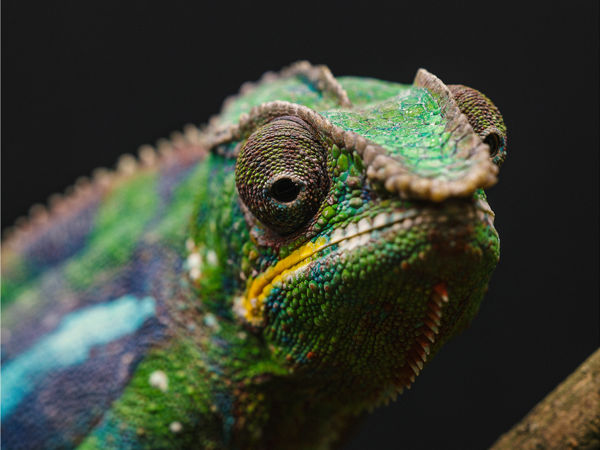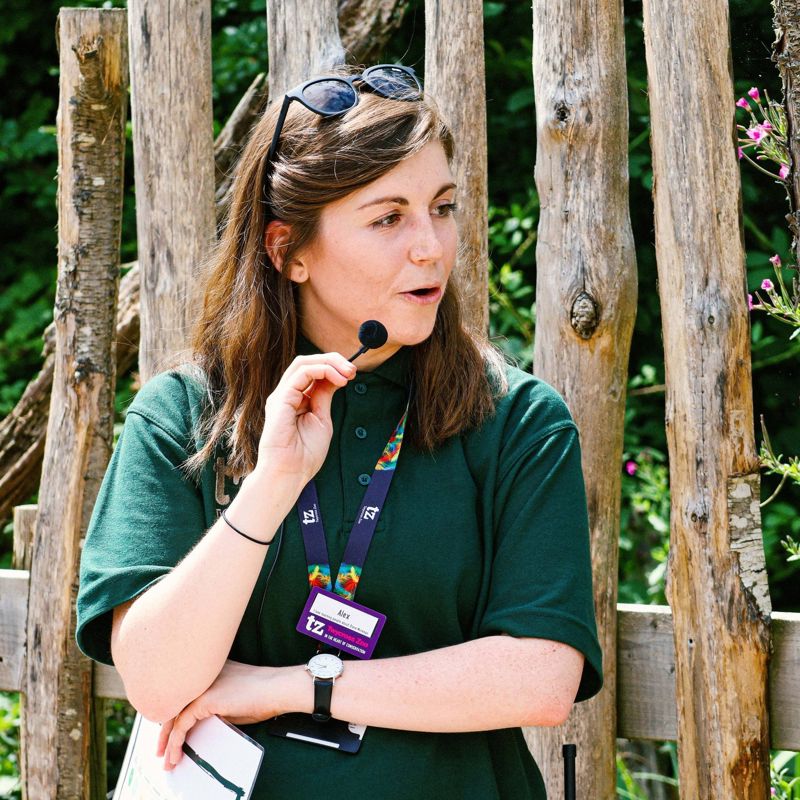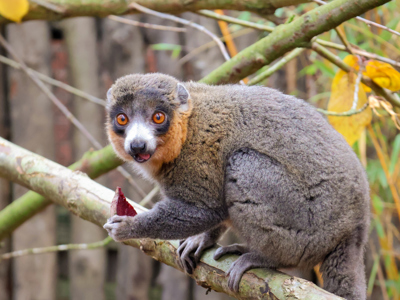
Mongoose Lemur
Key Facts:
Scientific name: Eulemur mongoz
Range: North-western Madagascar and the Comoros islands of Moheli, Anjouan and Grande Comoro
Habitat: Dry, deciduous forest and scrub
Diet: Omnivorous (fruit, leaves, seeds, flowers, nectar, ants)
Average size: Head-body length of 13.7 inches, tail length of 19 inches
Life span: 30 years in the wild
IUCN Red List: Critically Endangered
Lemurs are primates, but they are not apes or monkeys. They have long snouts ending in a wet nose, enhancing their sense of smell which they use to communicate and find food. Mongoose lemurs are no exception, but males and females of this species are sexually dimorphic (possess differing physical characteristics). Males have darker tail tips and have brownish-red fur under their chin, but the females have lighter tail tips and white fur beneath the chin. Mongoose lemurs are found in Madagascar, as well as some islands from the country of Comoros, which are close to Madagascar, located in the Indian Ocean. It is believed that humans were responsible for their move from Madagascar several hundred years ago.
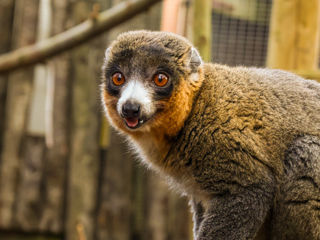
As folivorous, frugivorous and palynivorous primates (eating mainly foliage, fruits and pollen respectively), mongoose lemurs are a significant ecological species as they maintain Madagascan and Comoros forests. This forest regeneration process happens because of the tree seeds they disperse in their feces and the flowers they pollinate as they eat. This behaviour ensures the sustainability (continued availability) of resources such as food and shelter for themselves and other species sharing their range to access in the future
Lemurs are cathemeral, meaning they are active at different times of day depending on the seasons. In the rainy season, these lemurs are mainly diurnal (daytime-based) because these months tend to be colder. In the warmer dry season, they shift to more nocturnal (nighttime-based) activity to conserve their energy by avoiding foraging during the warmest parts of the day. During this season, there is considerably less tree coverage, so being active during the nighttime also helps these perceptive primates to avoid being preyed upon.
Monogamy (staying with the same mate year after year) is not common amongst lemurs. However, this is a trait that has been observed amongst mongoose lemurs, setting them apart from other species of lemur
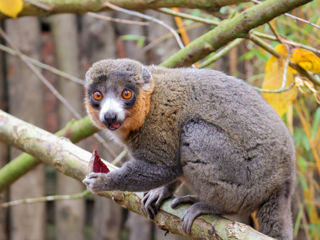
We have one conspiracy (group) of mongoose lemurs here at Twycross Zoo.
Most lemurs (including the mongoose lemur) have a specially adapted set of six teeth on their lower jaw called a toothcomb that is used to groom other members of their conspiracy, helping to remove dirt and parasites whilst developing strong social bonds with each other.
Mongoose lemurs have a range of vocalisations that enable them to communicate a variety of things to surrounding individuals including where their territory is, whether any predators are present and to re-group for the evening
As lemurs possess a well-developed sense of smell, mongoose lemurs also communicate through scent marking. Mongoose lemurs will rub the scent glands on their chest, wrists and top of their head onto surrounding surfaces to mark their territory, often creating bald spots on their bodies. Along with territorial communications, scent marking conveys lots of useful information to surrounding mongoose lemurs with information about an individual’s health, sex, fertility and age.
Mongoose lemurs are “Critically Endangered” according to the IUCN Red List, meaning they are one IUCN ranking away from experiencing extinction in the wild. This is due to:
Fragmentation: slash-and-burn agriculture is a method of agricultural production used in mongoose lemur range where areas of forest are removed and burned to create space for the growth of resources such as food and charcoal. This results in a reduction and fragmentation (separation) of suitable habitat for mongoose lemurs, making it harder for them to find food, shelter and non-related mates
Hunting/illegal pet trade: despite legislation prohibiting the trafficking of primates within and from Madagascar, lemurs are often captured from the wild to become part of the illegal pet trade. Mongoose lemurs are reportedly no exception to this, leaving the remaining mongoose lemurs with less opportunities to mate and create stable and healthy in-situ (wild) populations
-
![362277039 664600909026309 8369226469419348221 N]()
What we're doing...
EEP: Our mongoose lemurs are part of an EEP (EAZA Ex-situ Programme) for population management. The aims of this EEP are to maintain healthy populations of selected species whilst fulfilling the conservation requirements of that species. The priorities of the mongoose lemur EEP are not only to breed this species to increase the diversity (genetic variety) of their captive (zoo-based) populations, but also to support zoos in educating the general public about the threats they face in the wild
-
![Img 6030]()
How you can help?
Social media can be a powerful tool for good if used responsibly. An effective way to make a stance against illegal animal trafficking is to report any posts or footage you see containing evidence of wild animals being kept or sold as pets or who aren’t being properly looked after by a dedicated team of specialists in their field.
